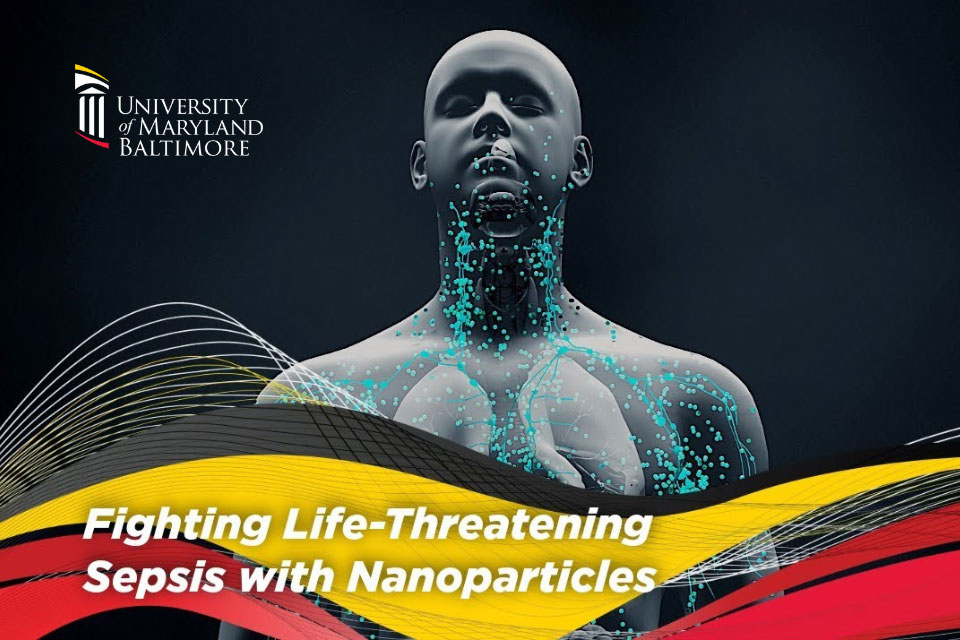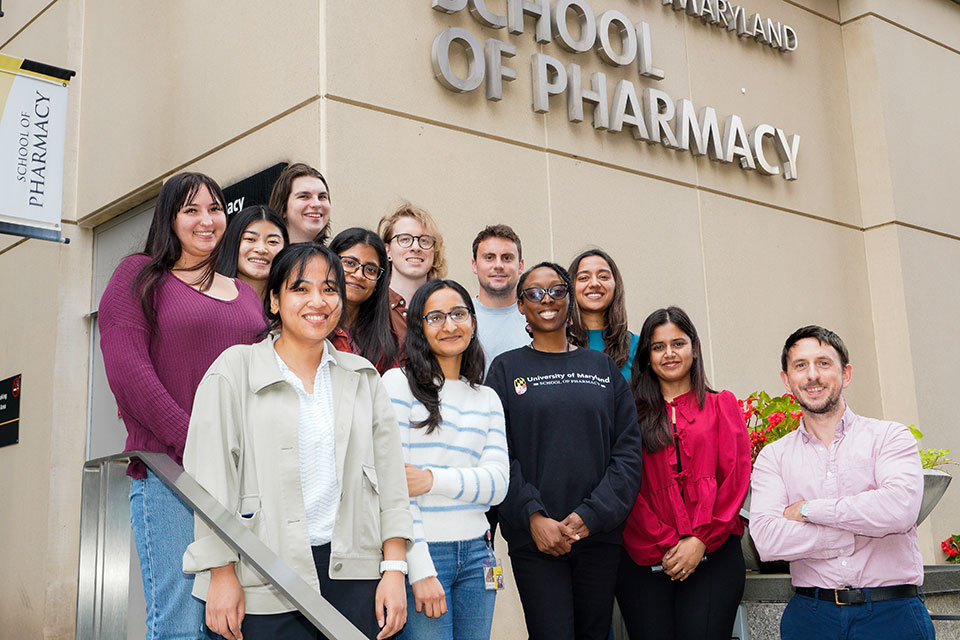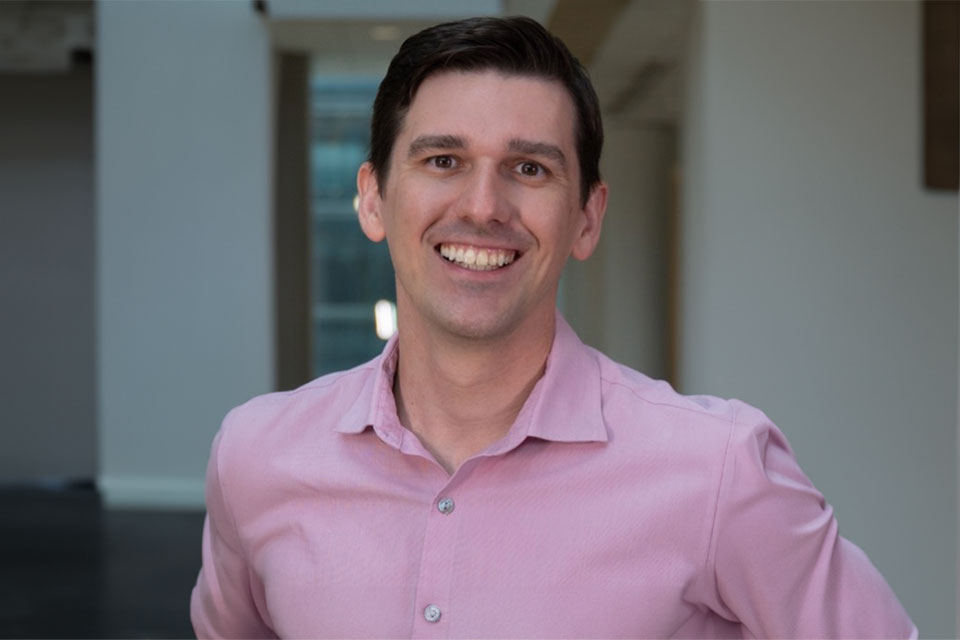Grollman Lecture Spotlights New Developments in Nanomedicine
Speakers Justin Hanes, PhD, and Francis C. Szoka, PhD, discuss how recent advancements in the field of nanomedicine are impacting drug development and delivery, as well as ongoing research in their labs.
By Malissa Carroll
May 27, 2016
The University of Maryland School of Pharmacy welcomed Justin Hanes, PhD, the Lewis J. Ort Professor of Ophthalmology and director of the Center for Nanomedicine at the Wilmer Eye Institute at Johns Hopkins University School of Medicine, and Francis C. Szoka, PhD, professor of bioengineering, therapeutic sciences, and pharmaceutical chemistry at the University of California, San Francisco, to Pharmacy Hall in April to deliver the annual Ellis S. Grollman Lecture in the Pharmaceutical Sciences.
“As we celebrate the School of Pharmacy’s 175th anniversary, we are honored to continue the tradition of hosting lectures that bring renowned scientists, practitioners, academics, and policy experts to the School to speak with faculty, staff, and students about a number of important topics in pharmacy and science,” said Natalie D. Eddington, PhD, FCP, FAAPS, dean and professor of the School, in her opening remarks to the audience. “This year’s Ellis S. Grollman Lecture in the Pharmaceutical Sciences features two very distinguished professors who will explore the past, present, and future of nanomedicine for drug delivery. Their insightful presentations promise not to disappoint.”
Hanes completed his doctorate in chemical engineering at the Massachusetts Institute of Technology (MIT) and is renowned for developing new methods of targeted and sustained drug and gene delivery to specific sites in the body. His presentation focused on advancements to which his laboratory has contributed on the delivery of drugs to mucosal surfaces in the body as well as the brain.
“If you saw a single weed in a garden, would you spray poison over the whole garden to kill that one weed?” questioned Hanes. “No, you would either spray a little poison just on that one weed or pull the weed out by hand. However, when we deliver chemotherapies using current drug delivery methods, we are essentially poisoning the whole garden to destroy one weed. Those drugs spread throughout the body, but only less than one percent reaches the tumor. The remaining 99 percent poisons other parts of the body. The question that we must now answer is: how can we design new systems to deliver these drugs that would be the equivalent of simply spraying that one weed?”
Hanes noted that the mucus that lines those openings to the body not covered by skin often traps standard nanoparticles. To better understand how new drug delivery methods might be developed to penetrate this barrier, the members of Hanes’ laboratory studied viruses such as the human immunodeficiency virus (HIV) and norovirus that are able to easily move through mucus. They discovered that by coating nanomedicines with low molecular weight polyethylene glycol (PEG) – a compound often used in drug manufacturing – that they were able to effectively deliver the drugs through the small pores of the mucus.
A number of clinical trials for different nanomedicines that employ this new drug delivery method are now ongoing as a result of the work of Hanes and his team members.
“The researchers in our center believe that medicine should only go where it is needed in the body, and that it should last once it gets there,” added Hanes. “Not only are we making medicines more effective at lower doses by delivering the drugs in such a way that allows us to effectively penetrate the mucus barrier and get those drugs to where they need to go, but we are also reducing side effects for those medications, which can be very important for individuals who take multiple medications each day.”
Speaking after Hanes, Szoka — who completed his doctorate in biochemistry at the State University of New York at Buffalo — explored the past, present, and future of nanomedicines in drug delivery. He spoke about the discovery of liposomes and how researchers use these nanocarriers to deliver drugs throughout the body. He highlighted his role in the development of exclusion – one of the most widely used techniques to manufacture liposomes in the laboratory – as well as the creation of “stealth liposomes,” which are coated with PEG to allow them to circulate longer in the body and make multiple passes through a tumor.
“If you visit Ocean City and only sit in your hotel room, you will not run into any people; however, if you walk around the Boardwalk, you will interact with a lot of people, and the probability is high that even the most stubborn person will find someone that he or she is compatible with,” explained Szoka. “The same is true with liposomes. If you are treating a serious illness like cancer, you need a delivery system that allows the drug to circulate for a long time, allows for appropriate drug release, and can penetrate tumors. The more a liposome circulates, the greater its opportunity to go through a tumor and deliver more drug to that tumor.”
Szoka, who has achieved international recognition for his research exploiting chemical, biophysical, and physiological principles to devise vaccine, drug, and nucleic acid delivery systems, also discussed his current work to develop liposome therapies to treat metal overload that often occurs as a result of sickle cell anemia, thalassemia, traumatic injury, and bone marrow transplantation. Looking to the future, he noted that the next phase of nanomedicine for drug delivery will likely involve the use of macrophages – cells formed in the immune system in response to an infection or an accumulation of dead cells – to treat disease.
“There are a number of challenges that exist surrounding the use of macrophages to treat disease, but I think all of these problems can be addressed in the near future,” concluded Szoka. “Perhaps, we might even see the implementation of macrophage-based cell therapy and universal donors for macrophages one day. A young, aspiring scientist could most certainly build a remarkable career in this emerging field.”



